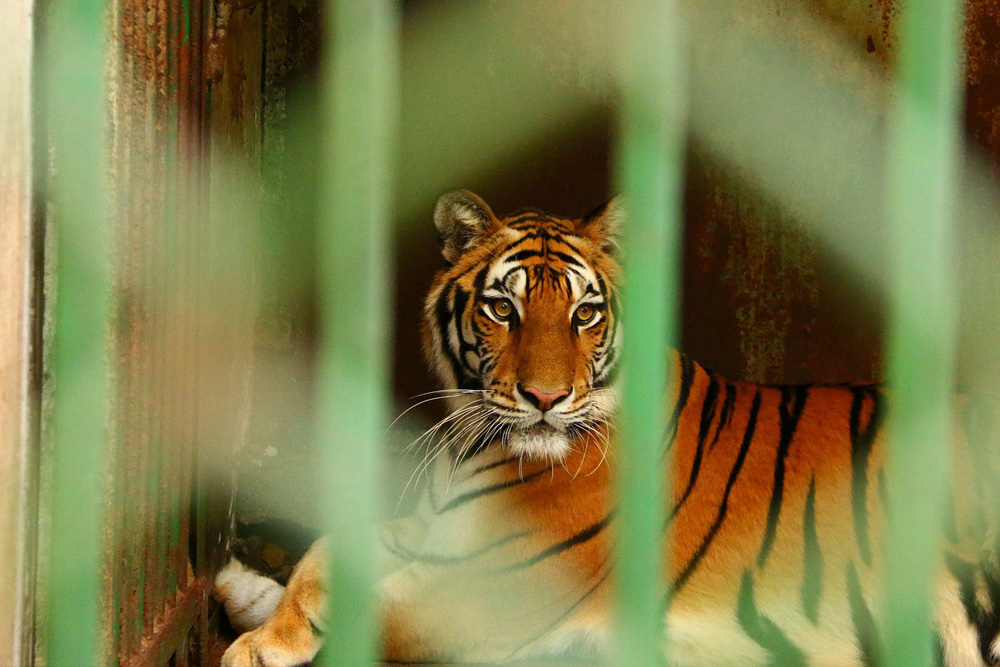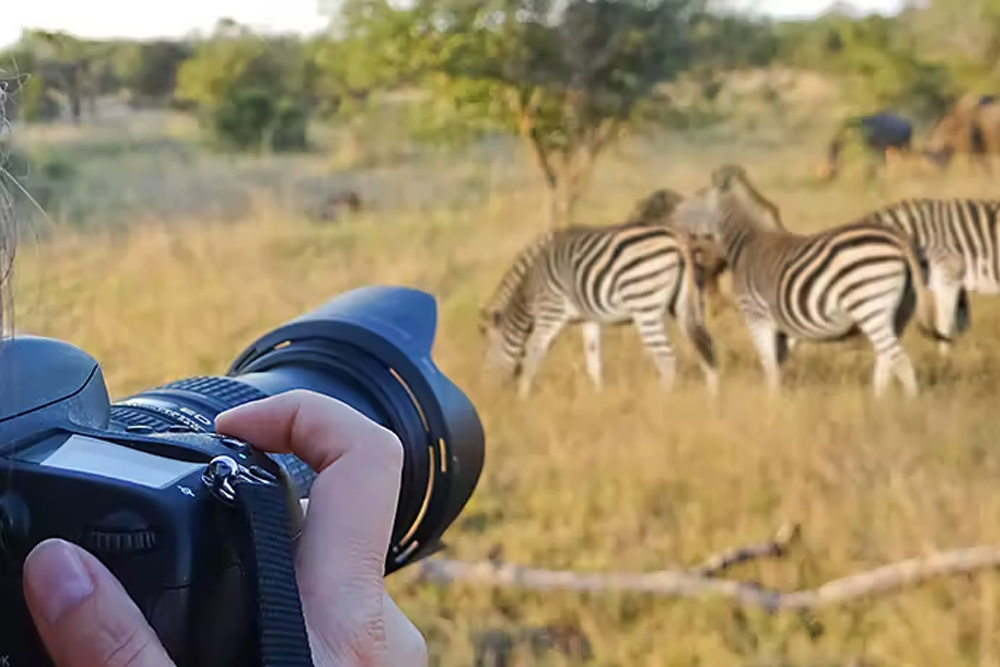The Future of Wild and Exotic Animal Conservation: How to Avoid the Worst-Case Scenario

Wild and exotic animals are those that live in natural habitats or are not domesticated by humans. They include a wide range of species, from mammals and birds to reptiles and amphibians, from insects and spiders to fish and corals. These animals are essential for the functioning and balance of the ecosystems they inhabit, as well as for the provision of goods and services that benefit humans and the planet.
However, wild and exotic animals are facing unprecedented threats from human activities, such as habitat loss and degradation, overexploitation, poaching, pollution, climate change and invasive species. According to the International Union for Conservation of Nature (IUCN), more than 37,000 species of animals are threatened with extinction, which means they are at risk of disappearing forever.
Related articles
1- Treat Your Pet Like Family: 10 Fun Activities to Do Together
2- Keep Your Pet Healthy and Happy with Regular Veterinary Check-ups
3- How to Keep Your Pets Mind Sharp with Unique Games and Foods!
4- From Fat to Fit: Home Exercises for Your Obese Pet
In this text, we will explore some of the innovations and challenges that shape the future of wild and exotic animal conservation. We will examine how new technologies, methods and approaches can help us monitor, protect and restore wildlife populations and habitats. We will also discuss how social, economic and political factors can influence the effectiveness and sustainability of conservation efforts. We will also highlight some of the ethical and moral dilemmas that arise from conserving wild and exotic animals in a changing world.
By reading this text, you will gain a better understanding and appreciation of the diversity and importance of wild and exotic animals. You will also become more aware of the opportunities and obstacles for wildlife conservation in the 21st century. You will be inspired to take action and make a difference for these animals and their habitats.
One of the innovations that is transforming wild and exotic animal conservation is the use of remote sensing technologies. Remote sensing refers to the collection of information about an object or area without direct contact with it. Remote sensing technologies include satellites, drones, cameras, sensors, radars, sonars and radio tags. These technologies can help us observe, measure and analyze wildlife distribution, abundance, behavior, health and threats across large spatial and temporal scales.
For example, satellite imagery can help us map wildlife habitats and land use changes; drones can help us survey wildlife populations and poaching activities; cameras can help us identify individual animals and their movements; sensors can help us detect environmental parameters such as temperature, humidity and noise; radars can help us track bird migrations; sonars can help us monitor marine life; radio tags can help us follow animal movements and interactions.
Remote sensing technologies can provide valuable data and insights for wildlife conservation. They can help us assess the status and trends of wildlife populations and habitats; they can help us design and evaluate conservation interventions; they can help us detect and prevent illegal activities; they can help us engage and educate stakeholders; they can help us improve conservation management and decision making.
However, remote sensing technologies also pose some challenges for wildlife conservation. They can be costly, complex and difficult to operate; they can generate large amounts of data that require processing, analysis and interpretation; they can raise ethical issues such as privacy, security and ownership; they can have negative impacts on wildlife such as disturbance, stress or injury; they can create dependency or complacency among conservation practitioners.
Therefore, remote sensing technologies need to be used with caution, care and responsibility. They need to be integrated with other sources of information such as field surveys, local knowledge or citizen science; they need to be validated with ground truthing or calibration methods; they need to be guided by clear objectives, protocols and standards; they need to be regulated by laws, policies or codes of conduct; they need to be evaluated by their costs.
To evaluate remote sensing technologies for wildlife conservation, we need to consider how well they meet the objectives and needs of the conservation project or program. We need to compare their costs and benefits, such as their accuracy, reliability, efficiency, scalability, accessibility and usability. We also need to assess their impacts and risks, such as their environmental, social, ethical and legal implications.
For example, according to Stephenson (2019)1, some of the criteria that can be used to evaluate remote sensing technologies for wildlife conservation are:
- Relevance: How well does the technology address the conservation question or problem?
- Effectiveness: How well does the technology achieve the desired conservation outcomes or impacts?
- Efficiency: How well does the technology use the available resources (time, money, personnel, etc.)?
- Equity: How well does the technology distribute the benefits and costs among different stakeholders (e.g., local communities, researchers, managers, donors, etc.)?
- Sustainability: How well does the technology ensure the long-term viability of the conservation project or program?
- Adaptability: How well does the technology cope with changing conditions or uncertainties (e.g., environmental, social, political, etc.)?
Here are some important and good data and some alarming and dangerous data about wildlife conservation:
- According to the WWF Living Planet Report 2022, the global population sizes of mammals, birds, amphibians, reptiles and fish have declined by an average of 69% between 1970 and 20161.
- According to the IUCN Red List of Threatened Species, more than 37,000 species of animals are threatened with extinction, which means they are at risk of disappearing forever2.
- According to the UNEP-WCMC Protected Planet Report 2020, 16.64% of terrestrial and freshwater areas and 7.74% of marine areas are covered by protected areas, which are regions designated and managed for the conservation of nature and biodiversity3.
- According to the Convention on Biological Diversity (CBD), 196 countries have adopted the post-2020 global biodiversity framework, which sets out a vision of living in harmony with nature by 2050 and includes 21 targets and 10 milestones for achieving this vision by 2030.
In conclusion, this text presented some of the innovations and challenges that shape the future of wild and exotic animal conservation. We examined how new technologies, methods and approaches can help us monitor, protect and restore wildlife populations and habitats. We also discussed how social, economic and political factors can influence the effectiveness and sustainability of conservation efforts. We also highlighted some of the ethical and moral dilemmas that arise from conserving wild and exotic animals in a changing world.
We learned that wild and exotic animals are essential for the functioning and balance of the ecosystems they inhabit, as well as for the provision of goods and services that benefit humans and the planet. However, we also learned that wild and exotic animals are facing unprecedented threats from human activities, such as habitat loss and degradation, overexploitation, poaching, pollution, climate change and invasive species. We learned that these threats have caused a dramatic decline in wildlife populations and biodiversity, putting many species at risk of extinction.
We also learned that there is still hope for wild and exotic animals if we act now to conserve them and their habitats. We learned that there are many innovations and solutions that can help us achieve this goal, such as remote sensing technologies, protected areas, anti-poaching and law enforcement, human-wildlife coexistence, captive breeding and reintroduction. However, we also learned that these innovations and solutions also face many challenges and risks, such as cost, complexity, ethics, impact and uncertainty. Therefore, we learned that we need to use these innovations and solutions with caution, care and responsibility. We need to integrate them with other sources of information and knowledge; we need to validate them with ground truthing or calibration methods; we need to guide them by clear objectives, protocols and standards; we need to regulate them by laws, policies or codes of conduct; we need to evaluate them by their costs, benefits
Sobre o Autor




0 Comentários